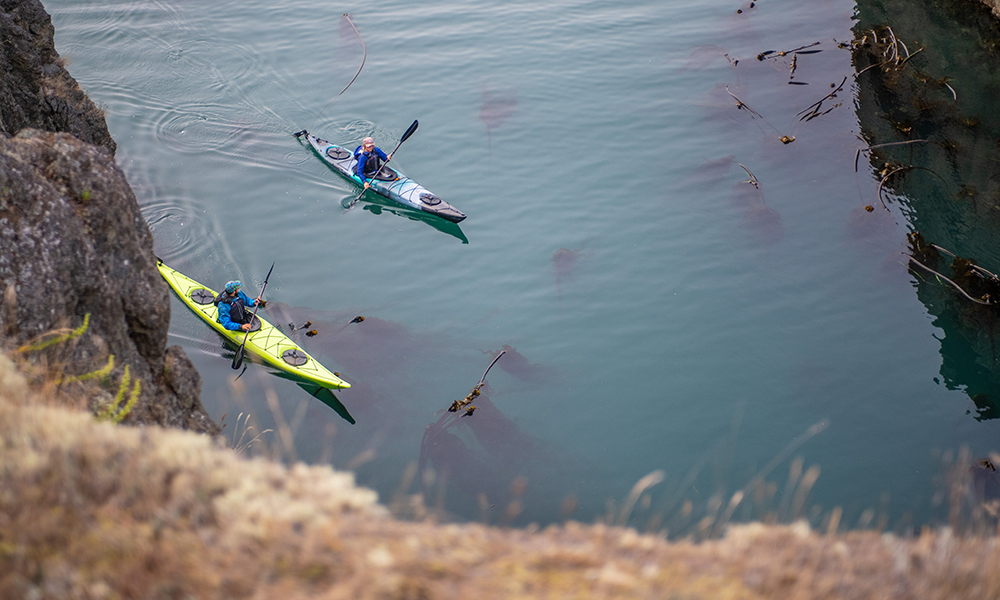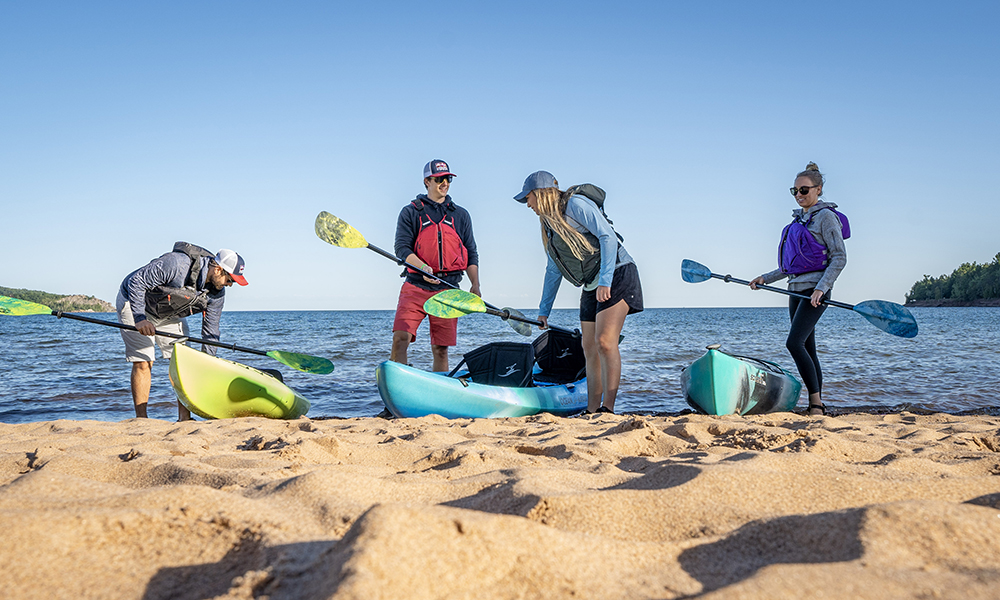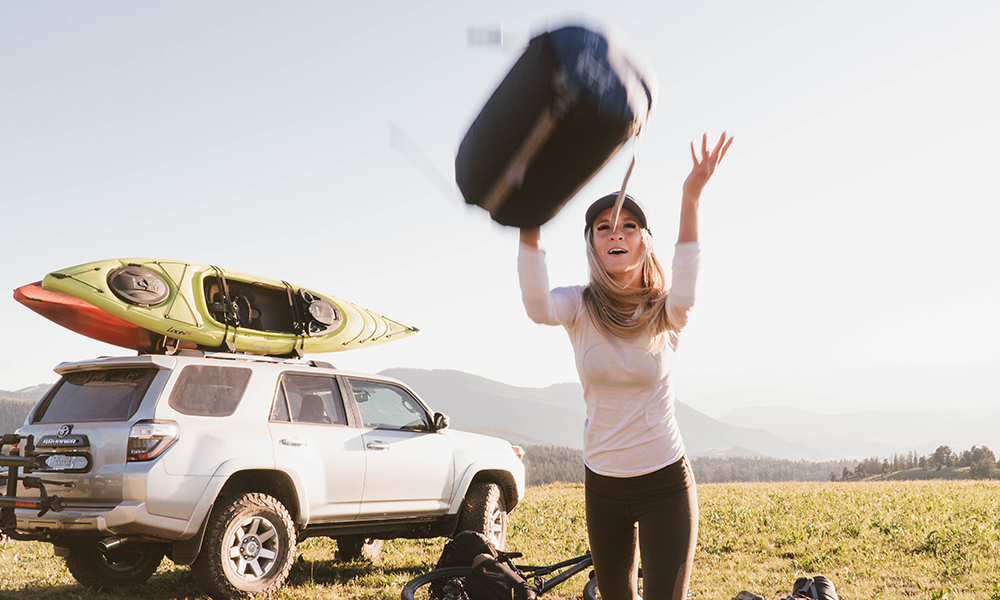Ultimate Kayak Camping Guide
Kayak camping is a unique adventure. It gives you the best of camping and kayaking, giving you days at a time on the water, uninterrupted by the stresses of everyday life. You can catch your dinner on the water, park at your campsite, and enjoy it before spending the night under the stars.
It gives you a physical challenge that's stimulating and invigorating. It shows you all that nature offers on water and land alike, while giving you a chance to show yourself what you're capable of. It gives you the mobility of backpacking, without the burden of carrying everything around yourself. And your kayak gives you extra storage space, similar to car camping, but you get to stay close to nature while you travel.
If you want to go kayak camping, you'll need to do a little bit of thought and planning before you set out. But it's not really any harder than backpacking, and the unique joys are worth it.
Kayak camping is similar to canoe camping. But because of the differences in size and shape, there's less room for people and gear. That means you may want to bring smaller groups for kayak camping. It also means you may have to think more strategically about what gear you bring, and how you store it. We'll talk about all of those factors as we go along.
CHOOSING A KAYAKING CAMPING TRIP
There are many things to consider when preparing to go kayak camping. One is your skill level. You're going to be spending a lot of time on the water, so you need to know what that water looks like, compared to what you'll enjoy. For many people, a day of shooting down the rapids is great, but three days straight might be too much. You don't want to learn that about yourself while you're too far down the river to get back.
Another thing to consider is what kind of camp sites you'll be staying at. Research the campsites you're staying at to make sure that you're not surprised by any permits or fees that you may need to address. It's not a big deal, but doing a little legwork beforehand can pay off.

BEGINNER LEVEL KAYAK CAMPING TRIPS
Wherever you are in the country, there's probably a beautiful, easy kayak camping spot nearby. For your first outing or two, it's probably best to plan on just going out for a night or two. This will introduce you to what's involved physically and mentally. It can also help you learn about what you do and don't want to bring with you in terms of gear. Here are some nice spots to spend a night or two. Bear in mind that most places have tour companies that will help you make arrangements, or even guide you on the water.
- The Youghiogheny River: The Yough runs through West Virginia, Maryland, and Pennsylvania, but the lazy waters in the middle are a beginner's best bet. If you're local to the area, you can cut your teeth there, and move on to more adventurous waters on either side of the river once you're ready for more.
- Everglades National Park: Also one of our favorite canoe camping trips, the Everglades are a unique ecosystem. There's a chance to see wildlife that you can't find anywhere else. There are a wide variety of trails here for canoes or kayaks. You can launch from multiple places around the park, with trips lasting anywhere from a few hours to a few days. Just be sure not to feed the alligators.
- The Colorado River: There are several stretches of the Colorado that are good for beginners. But the stretch in Utah from the Westwater Canyon through the Cisco Desert comes highly recommended. From stark cliffs to gentle farmland, this is a great way to experience the edge of the Southwest.
- The San Juan Islands: The waters of the Pacific Northwest are home to sea lions, porpoises, and even orcas. If you want to get out and see them (without trekking out to Canada) one way to do it is to kayak through the San Juan Islands. Explore the rocky coastlines, and experience the solitude of camping on a remote island. The nice thing about the San Juan Islands is that if you do tire out faster than you expected, you can recoup at a bed and breakfast on the islands.
- The Mississippi River: The Mississippi is a quintessential American river. It's the second-longest river on the continent, and it was important for supply lines and for relaxation even before Mark Twain made it part of American folklore. Water skiing was invented on these waters, and you can find seven National Park Services sites along its winding way. Just be careful. Currents at the lower part of the river can become very strong after a snow melt.
But what are some of your favorite kayak camping sites? We want to hear from our community. If you've got an inside line on a great stretch of river, let us know here.
BEST KAYAK FOR CAMPING
When you're looking for a camping kayak, you want durability, comfort, and plenty of storage. Touring kayaks like the Looksha, Loon, and Castine models help you stay on the water longer in comfort, and they're made for the long haul. The Looksha 17 features the largest hatches of any Old Town kayak. And its stability, glide, and acceleration mean that long trips don't have to be hard trips. If you're looking for a tandem option, the Looksha T offers room and comfort for two.
The Loon 126 is fantastic for long trips. The redesigned hull hits the perfect sweet spot of glide and tracking. The ACS2 seat puts the most comfortable seat available into the best-fitting cockpit you'll find, and matching thigh pads provide under-leg support, which can make a surprising difference. The dry storage includes a USB port, to help you keep your phone charged on a long-haul trip. Taken altogether, the Loon's comfort and performance make it great for long trips.
The Castine is a day touring kayak that comes in three sizes. The 135, 140, and 145 range from 13.5 to 14.5 feet long. Two hatches, plus removable slide-track day storage, mean that you can stow plenty of gear. And the ACS2 seat is so comfortable, you'll think you're dreaming.

PACKING FOR KAYAK CAMPING
In some ways, packing for kayak camping is easier than loading a backpack. You have more room to work with. And you don't have to physically carry everything yourself.
That said, there are challenges, too. And one of the big ones is keeping everything dry. One of the best ways to do this is by packing your gear in dry bags. (We know where you can get a few, in small, medium, or large sizes). You don't need a bunch of huge dry bags. A larger one and a handful of less sizeable ones should work just fine. You may also consider storage hatches to keep things secure.
It's also worth thinking about whether everything you have even needs to be kept dry. Tent poles can probably get wet for a little bit. If you have packaged foods like protein bars or canned goods, it probably won't hurt those to get wet, either, since the packaging will protect the food. Being strategic can help you save space in your dry bags for the things that really need protecting.
KAYAK CAMPING GEAR
Planning what to bring ahead of time can help you pack carefully. Here's a general rundown of some things that you may want to bring. We're not getting deep into details here,
- Dry bags
- Personal hygiene items like soap, toothbrush, etc.
- Sleeping bag
- Appropriate clothing. (This may mean rain gear, warm layers, and/or sun protection, depending on where you go. Do what you can to be prepared for weather surprises. But remember that you have less space than you might in a canoe.)
- Footwear. If you're planning on hiking, keep a pair of hiking boots in a dry bag and don't wear them in the canoe. Nobody wants to hike in wet boots.
- Gear for spending time on the water, like sunblock, hats, or a swimsuit
- Emergency gear like a flashlight, pocketknife, and first aid.
- Any fishing gear you may need
- Food and cookware. The nice thing about kayak cooking is that the extra space gives you room to bring nicer gear. If you want to bring your basecamp stove, you can! After all, you don't have to worry about toting it around. (Though you do have to keep it dry.)
- Water and/or water filtration. You don't want to be out on the water and not have any clean water to drink.

EXPERIENCE KAYAK CAMPING FOR YOURSELF
Wherever you go, whatever kayak you choose, and whatever gear you bring, kayak camping is a great way to see the outdoors. It's the best of all worlds: More gear than backpacking, more nature than car camping, and all the opportunities you could want for trekking on water or land.
If you've never done it before, it may seem intimidating, but it's really not harder than a backpacking trip. There's plenty of help out there to walk you through taking your first trip. And if you need more help choosing a kayak, our buying guide can walk you through some different options. We recommend a good touring kayak like the ones we mentioned above, but finding the best fit for you is important.






